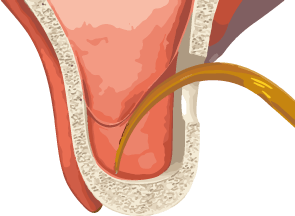If back teeth are to be replaced after having been missing for a while, the maxillary sinus cavity has a tendency to become pneumatized or “bubble down” and the molar extraction site of the alveolar bone starts to atrophy. Implants will not find adequate bony support they need from the maxillary sinus floor. For successful implantation, considerably more bone is required. To build up this missing bone there is a common procedure that can be done to create additional bone height and result in an adequate receptive site to place a tooth implant and return the option of having attached permanent teeth again. Otherwise, the patient would be relegated to wearing a removable partial or having a dental bridge. Sinus Lifting in Surgical Dentistry: Sinus lifting techniques are used as a preimplant procedure when the alveolar ridge’s bone volume is inadequate to a point where the implant’s stability is compromised. The goal is to increase the alveolar bone height in the posterior maxillary region, by lifting the sinus floor, and filling it with the necessary amount of bone graft, allowing it an appropriate time to heal, to become a potential area for a future successful dental fixture placement.



